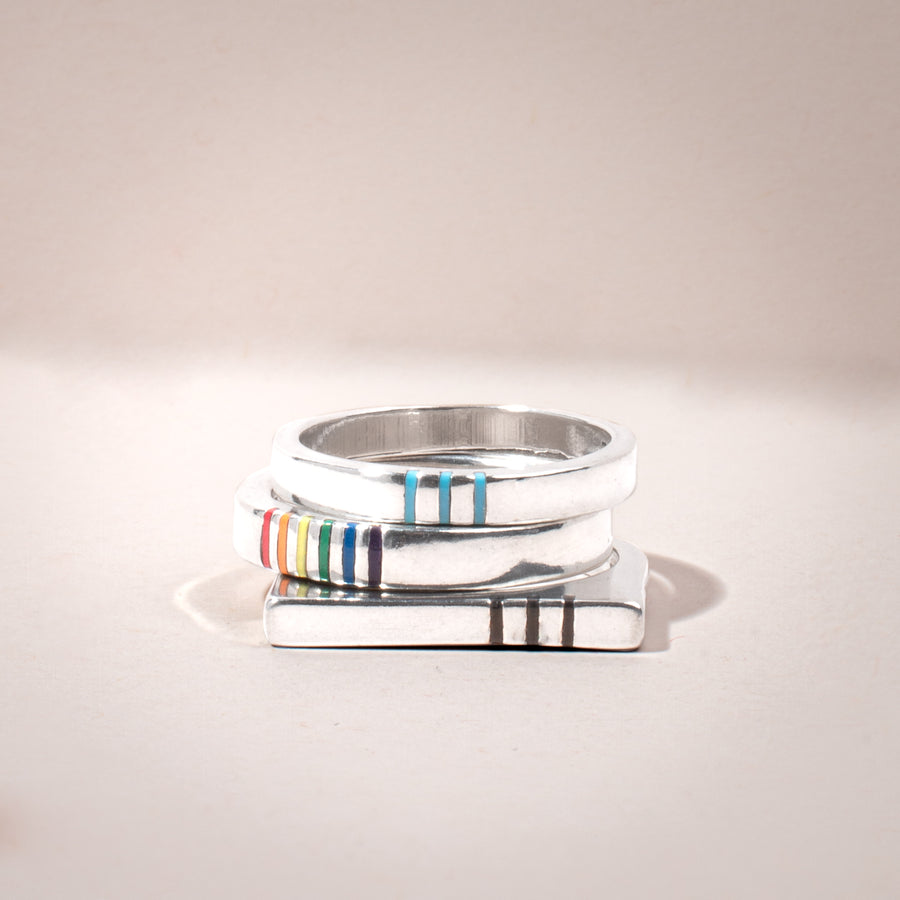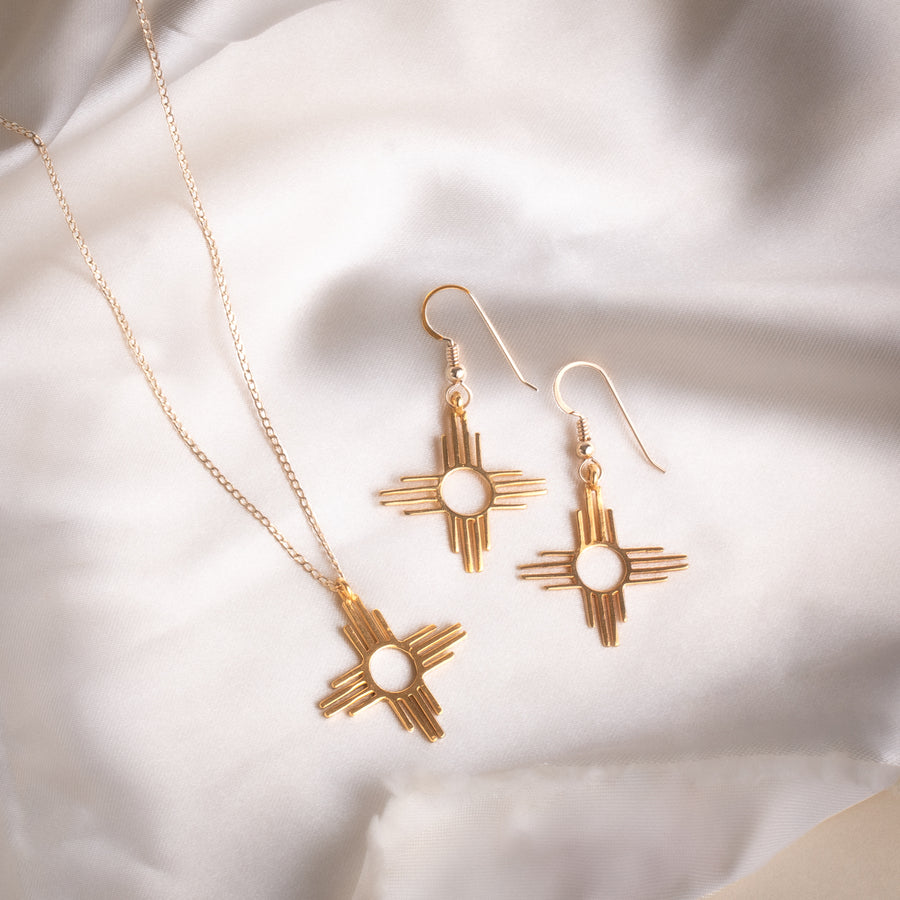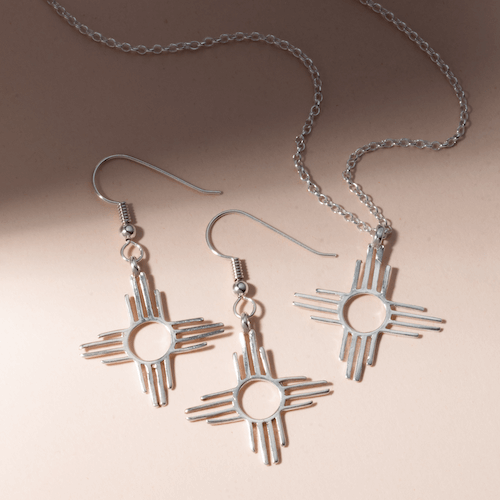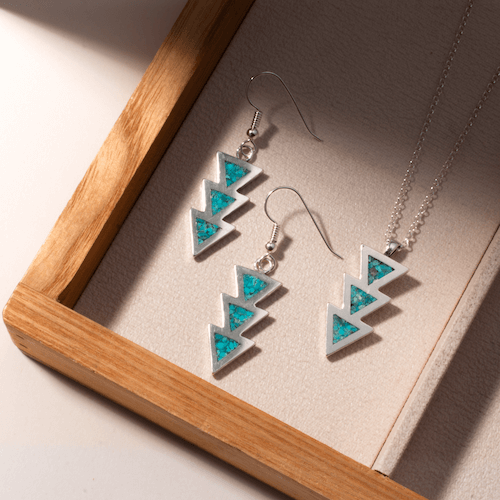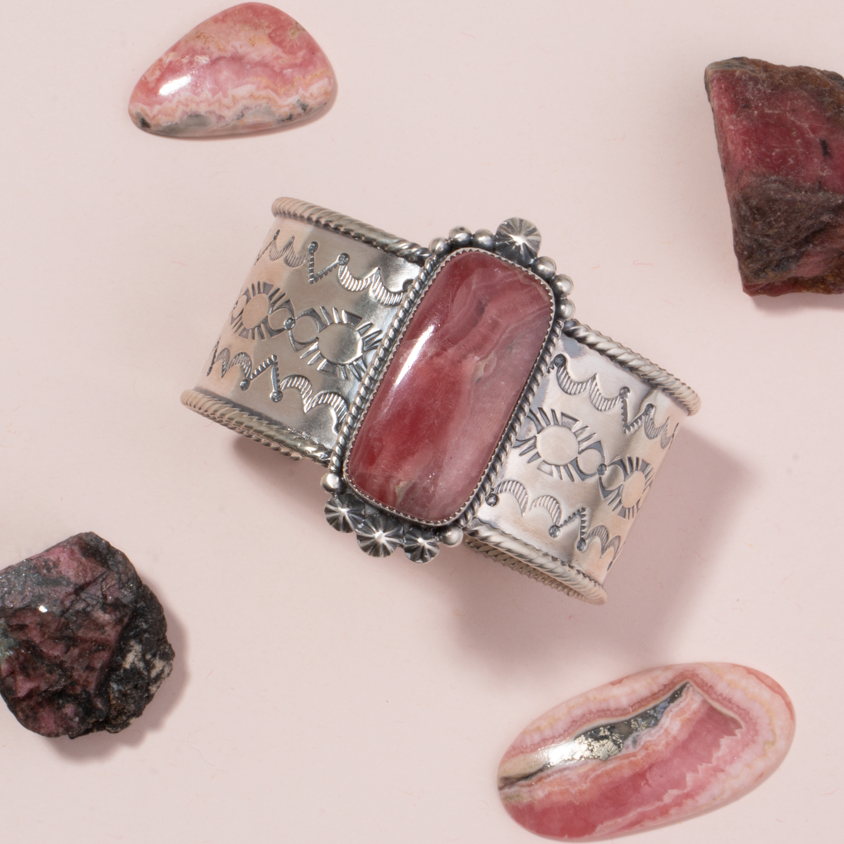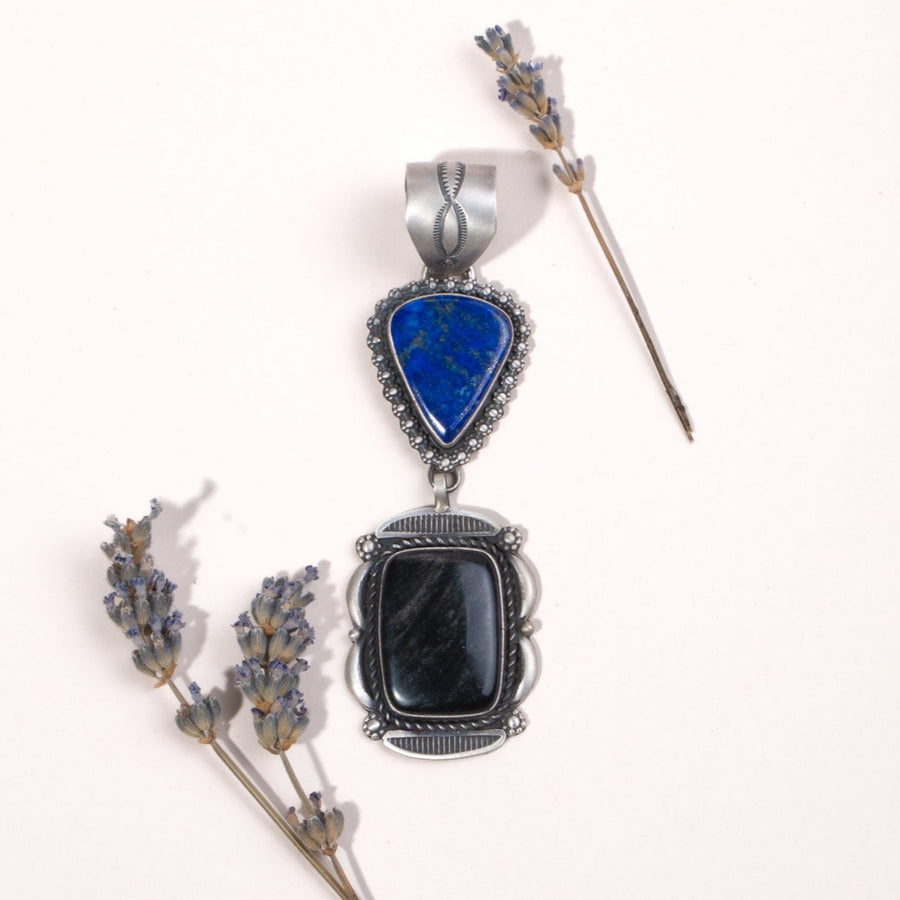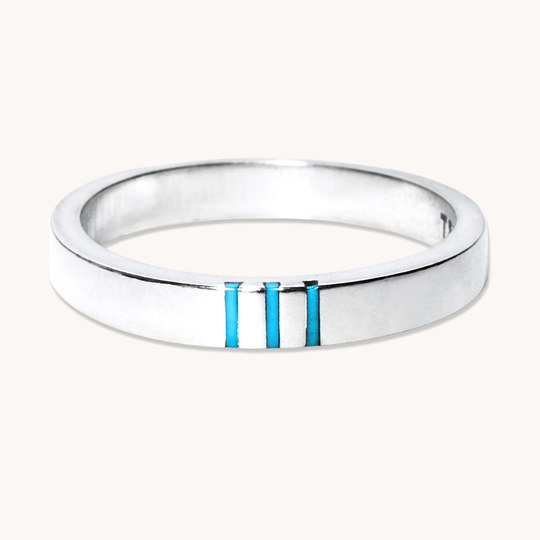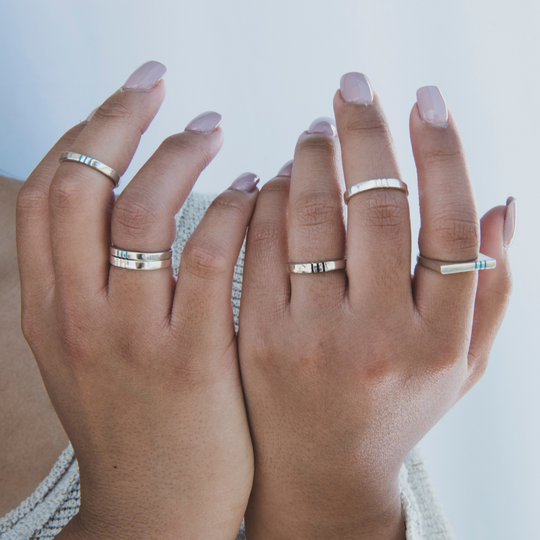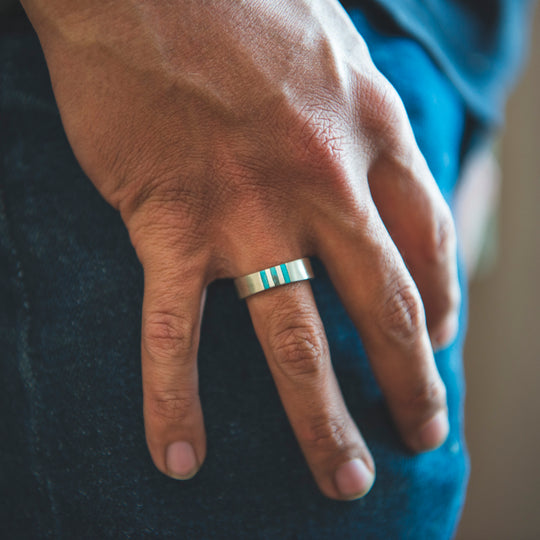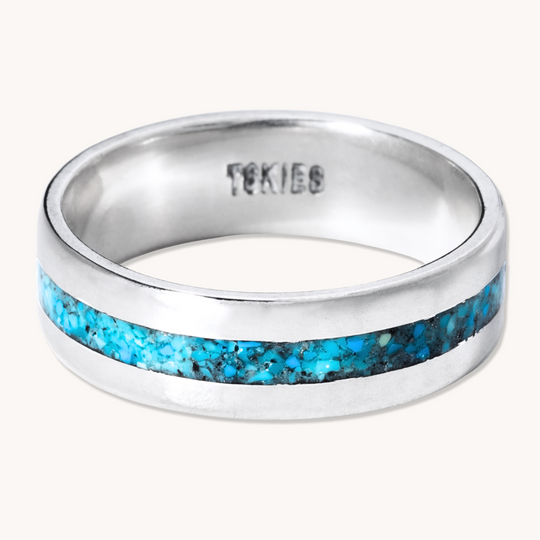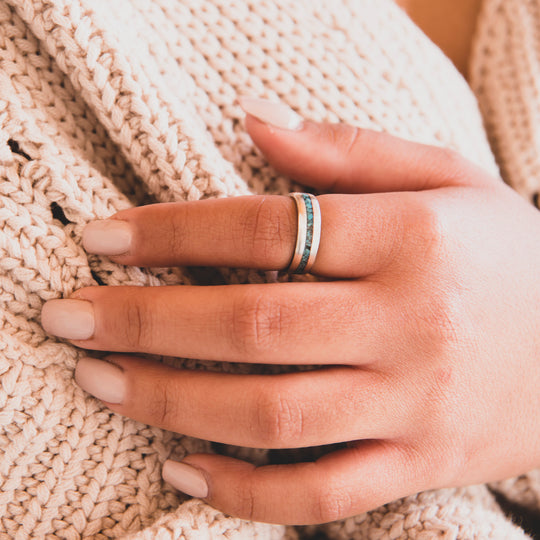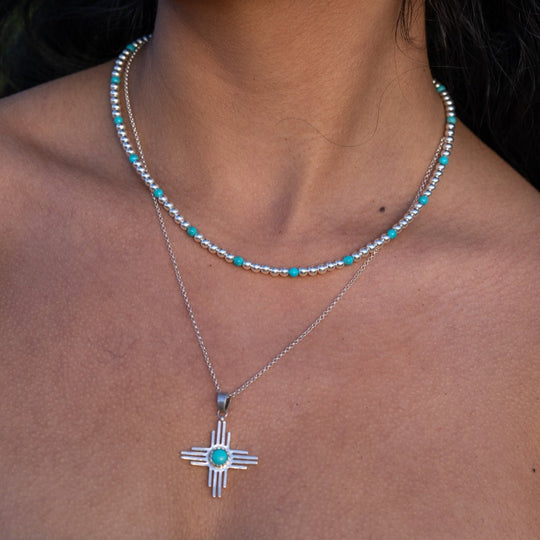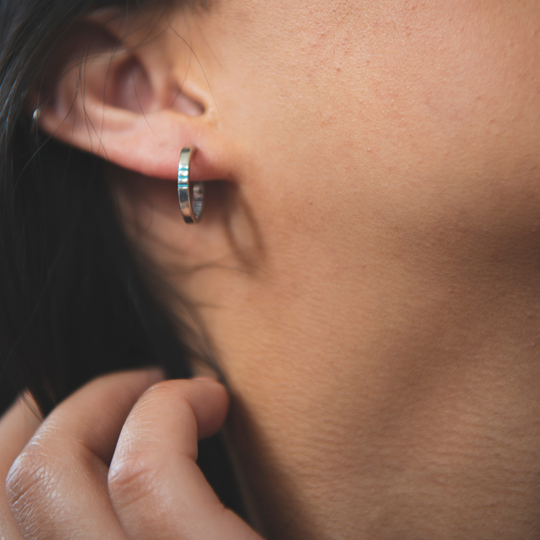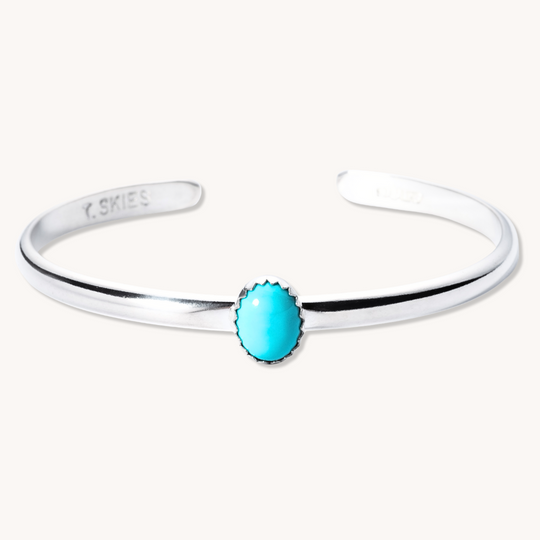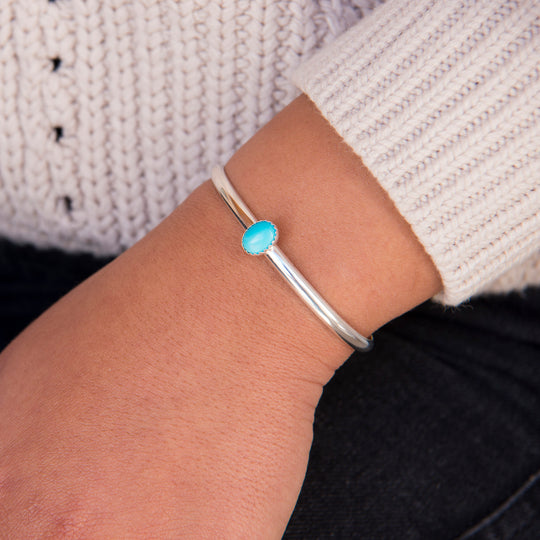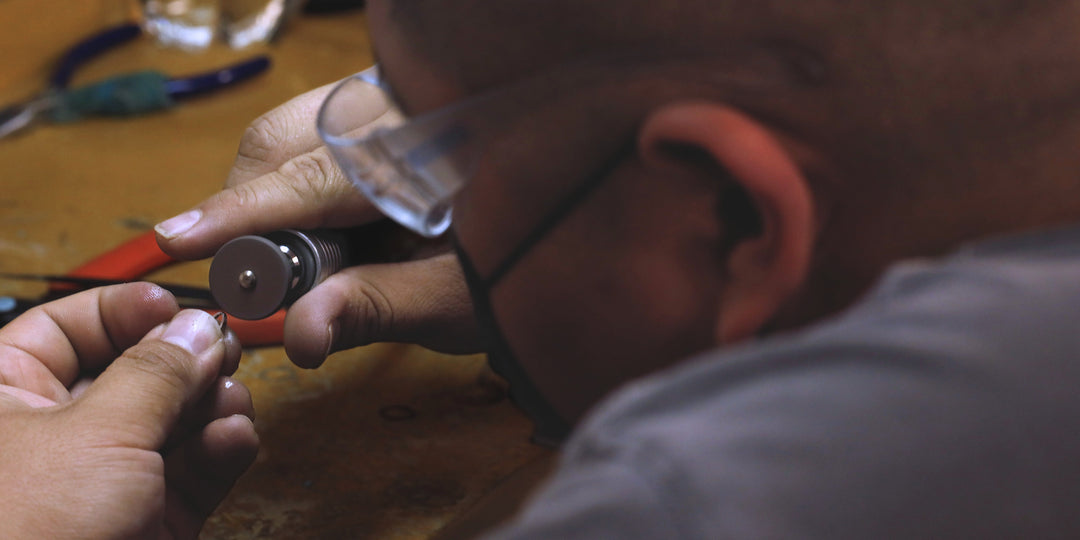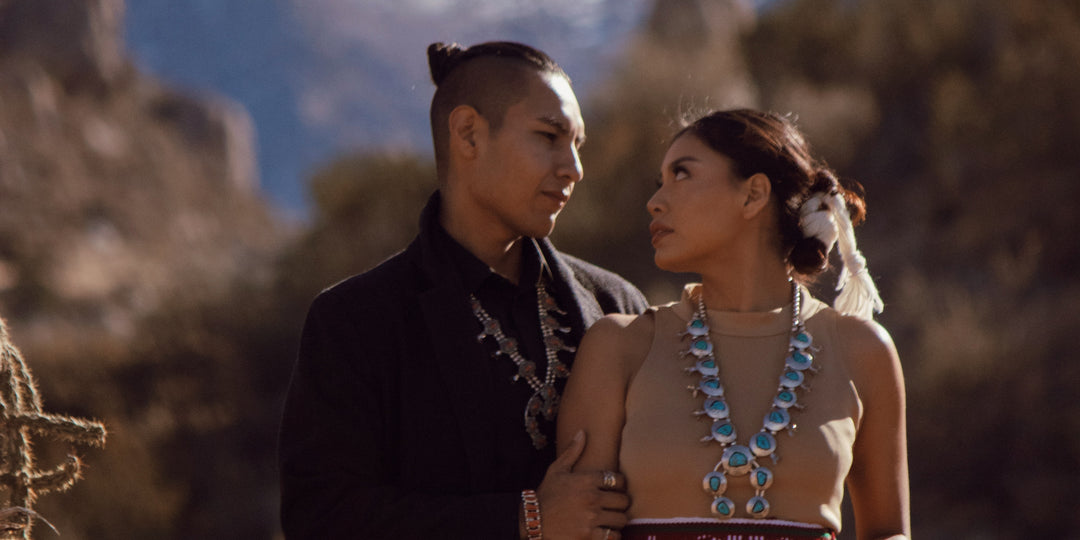The Timelessness of Turquoise

Turquoise is timeless. A fashion staple for over 3,000 years, and found on six continents, turquoise is ingrained in our human history. Not only does turquoise resemble water in appearance, it needs water to form, making it a sacred symbol of life in many cultures, including the Diné.
While the peoples of Africa and Asia are no strangers to turquoise jewelry, this stone that ranges from green to blue is an iconic part of Native American art and culture and symbolizes the Southwest, where we are home to many famed mines. Some of our most iconic stones include Kingman Turquoise, known for its bright blue tone and characteristic veining, along with the vividly blue Sleeping Beauty stones, and a handful of rare stones from now-closed mines including Lone Mountain, Number 8, and New Mexico’s very own Cerrillos mine. The icy-blue Larimar is one of the most rare and highly sought after turquoise stones in the world and comes from the remote Barahona region in the Dominican Republic.
Rich in turquoise, China has mined it for 2,000 years and now accounts for over 60% of stones used today. Some of the finest stones originated in this beautiful country, including the deep blue-green Cloud Mountain Turquoise with its dramatic black matrix.
The ancient Egyptians and the Chinese, whose homeland is a major source of turquoise, have used the stone in their art and jewelry for centuries. The oldest discovery of mined turquoise were beads found in Iraq, dating back to 5000 BCE. The gemstone was also found in jewelry in Egyptian tombs, dating back to 3000 BCE, as was used in King Tut’s burial mask. It was even used to decorate the Taj Mahal, while ancient Persians wore it as protection against unnatural death. The Aztecs inlaid it in skulls, statues, and shields. For Diné, the color of the gemstone represents the water, sky, and the hope that the wearer will become one with the universe.
The subject of many mythologies, the combination of the blue/green gemstone and the matrix of the mother stone are said to symbolize the earth and sky coming together to join female and male energies.
In the Southwestern United States, some Indigenous people believe that their ancestors were so happy to see rain after a long drought that they danced and rejoiced. Their tears mixed with the rain and seeped into the earth to become turquoise.
The Hopi believe that the earth used to be covered in water, and turquoise helped to remove this water so that life could begin.
Diné recount how Changing Woman appeared to her people as a drop of turquoise, and some legends say that this goddess lives in a turquoise house and wears turquoise jewelry. At birth, Diné babies are given their first turquoise beads for protection and health. They also use turquoise in various ceremonies, such as marriage, initiation, and healing ceremonies, and to aid in finding water. Some Diné say that if you are wearing turquoise and notice a crack in it, then the stone absorbed a negative energy that was meant for you.
To the Zuni, the color of turquoise represents Awonauilona, a supreme life-giving power, and because the color can change depending on the light, the weather, or nearby elements, it has also been used for prophecy and divination.
Turquoise represents the hopes for a bountiful harvest and aids in survival. Pueblo dancers wear turquoise to ensure rain for their crops. Native American hunters would draw lines with turquoise in an attempt to slow game down and make them easier to hunt.
Turquoise is more than just a beautiful blue gem. It represents so many things: a connection between the physical world and the spiritual; the bond between man and nature; dreams of luck, success, and a healthy and happy life. Although turquoise is associated closely with Native Americans, the gem has a universal appeal, as it represents what many of us want out of life.
